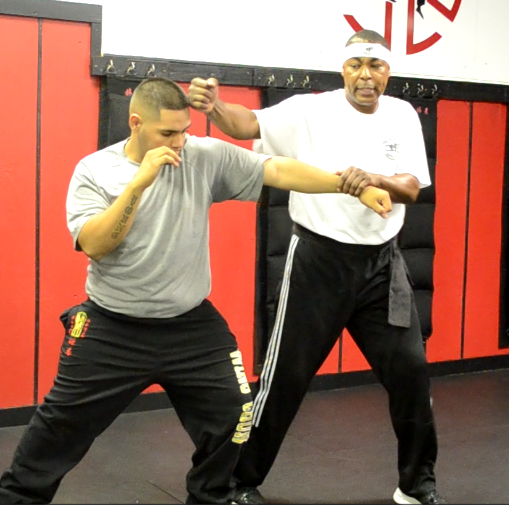The Connection Between Footwork and Wing Chun Techniques: How to Use Your Feet to Enhance Your Strikes
By Maurice Novoa a master under the Yuen Kay Shan, Ip Man and Pan Nam lineages.
Introduction:
In Wing Chun Kung Fu, footwork is not just about movement and mobility—it is intricately connected to the execution and power of your strikes. By understanding the relationship between footwork and techniques, practitioners can leverage their feet to enhance the effectiveness and impact of their strikes. In this article, we will explore how you can use proper footwork in conjunction with Wing Chun techniques to optimize your strikes.
1. Establishing a Stable Base
A stable and balanced stance is the foundation for powerful strikes in Wing Chun. Proper foot positioning and weight distribution create a solid base from which you can generate and transfer force. The most common stance in Wing Chun is the “Yee Jee Kim Yeung Ma” or the “Character Two Goat Stance,” which involves placing the feet shoulder-width apart with the toes pointing slightly inward. This stance provides stability, balance, and optimal weight distribution for executing strikes.
To establish a stable base, focus on the following:
Proper Weight Distribution: Ensure that your weight is evenly distributed between both feet. This allows you to maintain balance and react swiftly to changes in the opponent’s movements.
Relaxed and Flexible Feet: Keep your feet relaxed and slightly arched. This enables quick pivoting and smooth weight transitions during strikes.
Grounding and Connection: Feel the connection between your feet and the ground. Imagine rooting yourself like a tree, providing a solid foundation for your techniques.
2. Generating Power through Footwork
Footwork plays a crucial role in generating power for your strikes. By utilizing proper weight transfer and body mechanics, you can maximize the force behind your techniques. One notable technique that demonstrates the connection between footwork and striking power is the downward elbow strike derived from the Biu Jee form.
In the Pan Nam and Sum Nung Lineages of Wing Chun, practitioners employ a full-body pivot to power the downward elbow strike. This technique involves rotating the entire body, initiated from the feet, as the weight shifts and pivots with forceful intent. The proper coordination of footwork and body rotation adds tremendous power and impact to the downward elbow strike, making it a formidable technique in close-quarters combat.
To generate power through footwork, consider the following:
Weight Transfer: Shift your weight smoothly and explosively from one foot to the other as you execute strikes. This transfer of weight adds momentum and power to your techniques.
Body Alignment: Ensure that your body is aligned with the direction of your strike. This alignment allows for efficient force transmission and helps generate maximum impact.
Explosive Push-Off: Use the power of your legs and feet to generate a strong push-off from the ground. This explosive action propels your strikes forward with greater force and speed.
3. Lateral Footwork for Angles and Evasion
Effective footwork also enables practitioners to create angles for striking and evasion. By utilizing lateral footwork, such as the sidestep, practitioners can position themselves to attack vulnerable targets while avoiding incoming strikes. This lateral movement is particularly valuable when engaging multiple opponents or when facing a more significant force.
To incorporate lateral footwork into your Wing Chun techniques, consider the following:
Sidestep: Step sideways with a small and quick movement, keeping your body aligned and maintaining balance. This footwork allows you to create angles for striking or evading incoming attacks.
Angle Changes: Use your footwork to change angles during combat. By pivoting and stepping at different angles, you can surprise your opponent, disrupt their balance, and create openings for effective strikes.
Evasion and Defense: Employ lateral footwork to evade and defend against strikes. By moving laterally, you can minimize the chances of getting hit and create opportunities for counterattacks.
Conclusion
The connection between footwork and Wing Chun techniques is vital for optimizing your strikes. By establishing a stable base, generating power through proper weight transfer and body mechanics, and utilizing lateral footwork for angles and evasion, you can enhance the effectiveness and impact of your techniques. Understanding and practicing the footwork principles of Wing Chun will enable you to leverage your feet to generate power, control distance, and deliver precise strikes.
In addition, remember that footwork is not just about physical movement—it is also about developing sensitivity and connection with the ground. Through dedicated training and application, you can develop a seamless integration of footwork and techniques, elevating your proficiency in Wing Chun Kung Fu. As you progress in your training, continually refine your footwork, seeking the optimal balance between stability, mobility, and agility.
By mastering footwork in Wing Chun, you unlock a whole new dimension of martial arts proficiency. Your strikes become more powerful, your control of distance improves, and your overall combat effectiveness is enhanced. Embrace the importance of footwork in Wing Chun, and let your feet become a vital tool in your martial arts journey.

